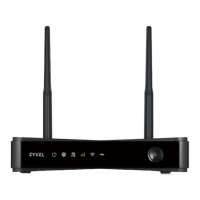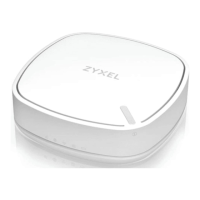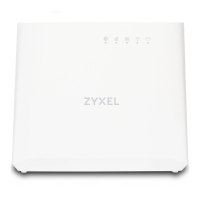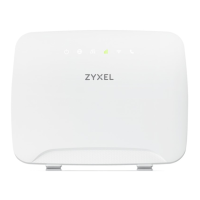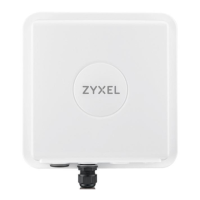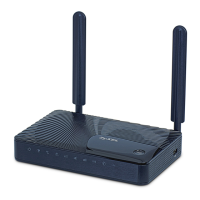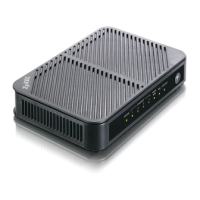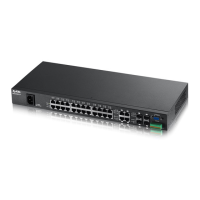LTE Series User’s Guide
175
CHAPTER 11
Dynamic DNS Setup
11.1 DNS Overview
DNS
DNS (Domain Name System) is for mapping a domain name to its corresponding IP address and vice
versa. The DNS server is extremely important because without it, you must know the IP address of a
machine before you can access it.
In addition to the system DNS server(s), each WAN interface (service) is set to have its own static or
dynamic DNS server list. You can configure a DNS static route to forward DNS queries for certain domain
names through a specific WAN interface to its DNS server(s). The Zyxel Device uses a system DNS server
(in the order you specify in the Broadband screen) to resolve domain names that do not match any DNS
routing entry. After the Zyxel Device receives a DNS reply from a DNS server, it creates a new entry for
the resolved IP address in the routing table.
Dynamic DNS
Dynamic DNS allows you to use a dynamic IP address with one or many dynamic DNS services so that
anyone can contact you (in NetMeeting, CU-SeeMe, etc.). You can also access your FTP server or Web
site on your own computer using a domain name (for instance myhost.dhs.org, where myhost is a name
of your choice) that will never change instead of using an IP address that changes each time you
reconnect. Your friends or relatives will always be able to call you even if they don't know your IP
address.
You first need to have registered a dynamic DNS account with www.dyndns.org. This is for people with a
dynamic IP from their ISP or DHCP server that would still like to have a domain name. The Dynamic DNS
service provider will give you a password or key.
11.1.1 What You Can Do in this Chapter
• Use the DNS Entry screen to view, configure, or remove DNS routes (Section 11.2 on page 176).
• Use the Dynamic DNS screen to enable DDNS and configure the DDNS settings on the Zyxel Device
(Section 11.3 on page 177).
11.1.2 What You Need To Know
DYNDNS Wildcard
Enabling the wildcard feature for your host causes *.yourhost.dyndns.org to be aliased to the same IP
address as yourhost.dyndns.org. This feature is useful if you want to be able to use, for example,
www.yourhost.dyndns.org and still reach your hostname.
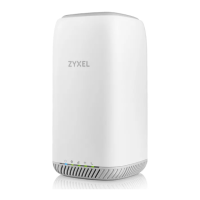
